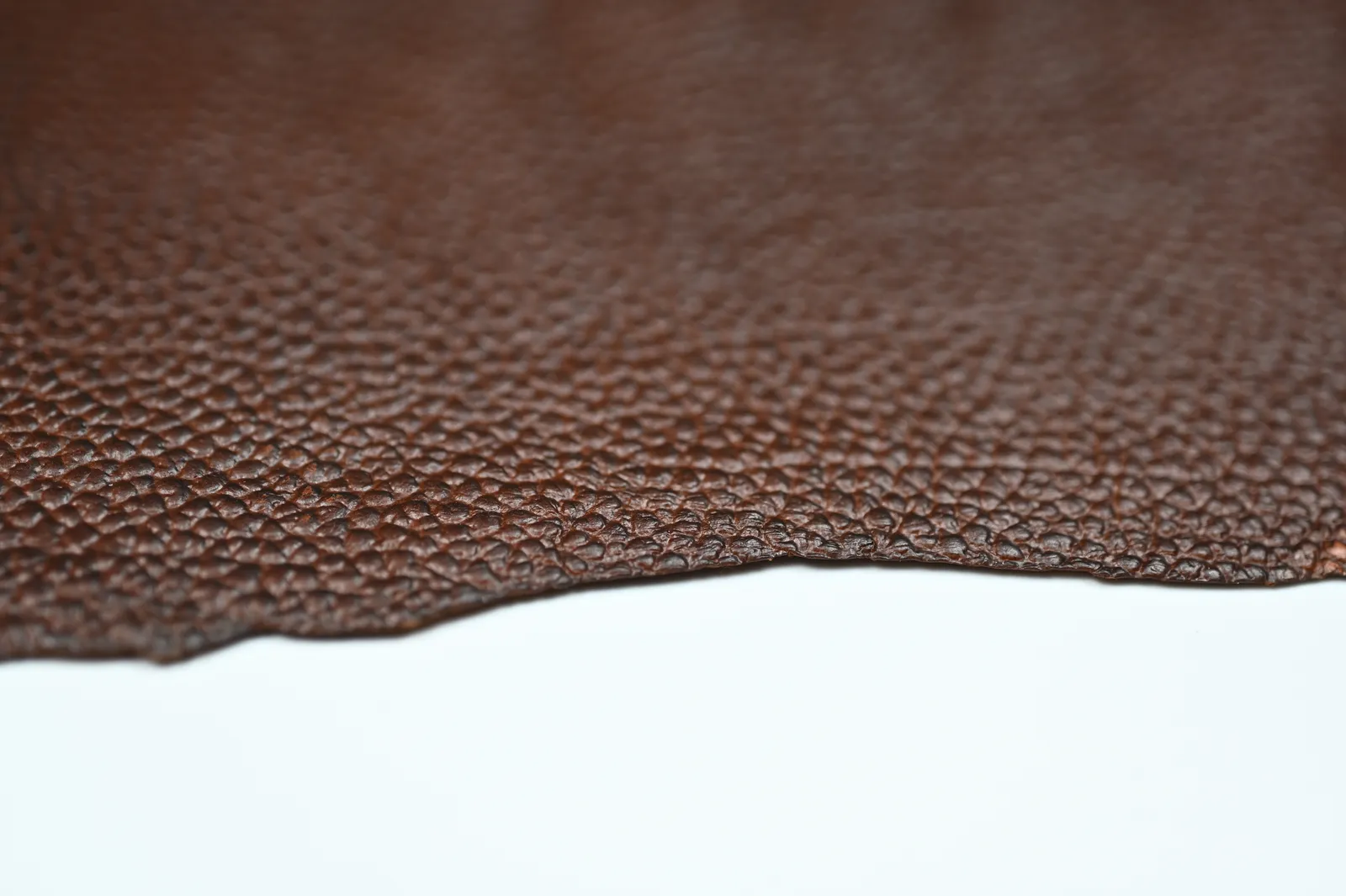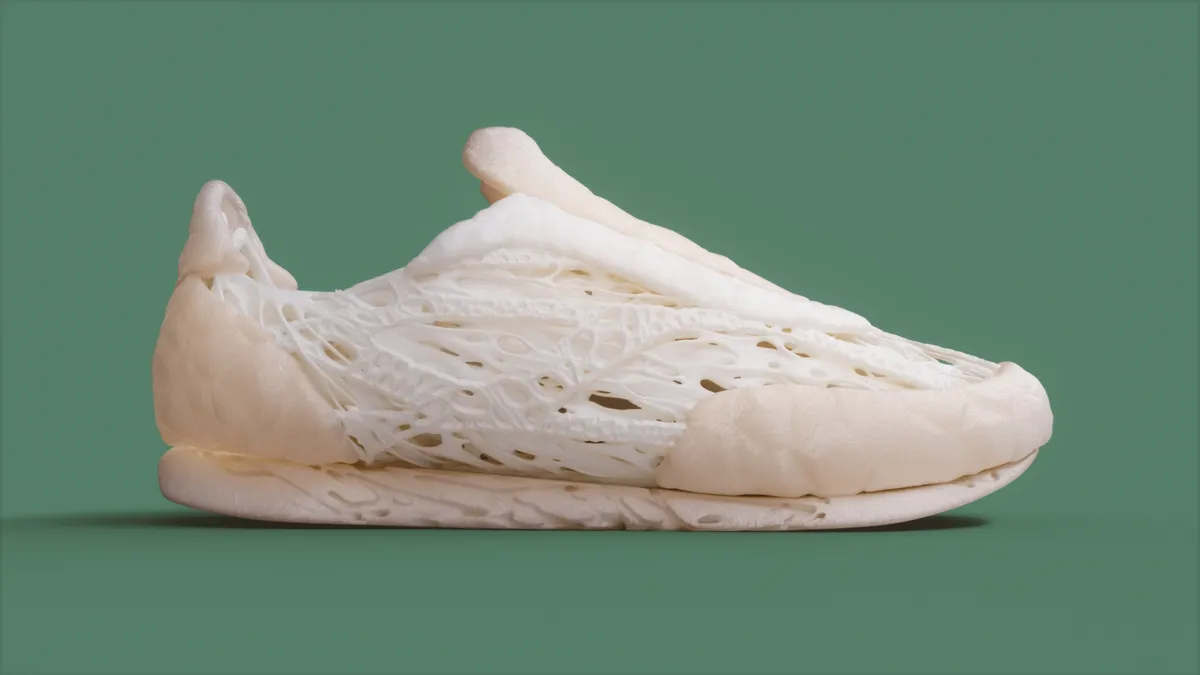In a world where consumers are increasingly concerned about the environment, fashion is being forced to get creative.
Just as fur became a controversial material in the industry, animal leather has been brought into question by consumers for similar reasons: animal cruelty and environmental concerns.
A consumer survey by the Material Innovation Initiative and North Mountain Consulting Group in March of last year found that 55% of the 519 individuals surveyed preferred leather alternatives. Those who preferred animal leather indicated this was driven by its quality and durability, while those preferring alternatives felt their preference was based on its impact on animals and the environment.
The interest in finding animal leather alternatives spurred the creation of plastic-based leather (made of either polyvinyl or polyurethane, for example), which is an option that might be less harmful to animals, but ultimately creates more plastic. In the same survey, those who preferred animal leather and those who preferred alternatives were more enthusiastic about buying plant fiber alternatives instead of plastic-based ones.
The global leather goods market is still strong though. Data from Straits Research in August found that the market’s value — which was at $420 billion in 2021 — is expected to reach about $721 billion by 2030.
This puts retailers in a unique position, where brands are looking to find alternatives that can be both better for the environment and animals.
That has welcomed investment into new plant materials that mimic the quality of animal leather, without the need for the same amount of plastic as traditional alternatives. One particular innovation making its rounds is made from mycelium — the underground root-like network that creates the fruiting body we know as mushrooms.
Several retailers have either launched products made of mycelium leather or have started investing in its development, touting the environmental impact it has compared to plastic-based faux leather.
But, is the material as sustainable as some claim?
A purse, but made of fungi
Two companies that have entered the market to create scalable mycelium-based leather over the past few years are Forager by Ecovative and MycoWorks.
While mycelium is naturally found beneath the soil, both these companies are able to grow it indoors within a controlled environment.
Forager has what it describes as controlled vertical farms that grow mycelium from “a blend of agricultural byproducts called substrate,” according to its website. The company’s process guides the mycelium to grow above the substrate, into sheets that can be used across a variety of applications. Forager says it can grow the sheets in nine days.

Rather than a sheet of mycelium, MycoWorks’ Fine Mycelium product “engineers mycelium cells as they grow to create three-dimensional structures that are densely entwined and inherently strong,” according to its website.
Both Forager and MycoWorks provide clients with the ability to customize the finish and color of the mycelium leather.
Durability is a major factor for consumers who still prefer animal leather. A respondent from the Material Innovation Initiative study said, “I prefer the durability, reliability, and feel of real leather. Too many times have I had fake leather or leather alternatives deteriorate on me," while another noted they felt the "wearing/aging of leather has not been reproducible at present."
MycoWorks claims that its Fine Mycelium product "is the first biomaterial that matches the strength, hand feel and durability of cowhide," according to its website.
While Mark Taylor, research fellow at the School of Design for the University of Leeds, hasn't conducted durability tests himself with mycelium leather, he told Retail Dive, "I can't see any reason why they wouldn't have good durability as long as they've been grown thick enough."
Several retailers have worked with mycelium leather in recent years. MycoWorks has collaborated with luxury retailer Hermès, known for the Birkin, to create a Victoria Bag made with Fine Mycelium. Forager notes working with brands like PVH, Pangaia and Reformation as well.
Forager’s parent company, Ecovative, also licensed its technology to Bolt Threads, which developed the mycelium-based leather brand called Mylo. Mylo partnered with Lululemon and Stella McCartney to develop products such as yoga mats and purses. In 2019, Ecovative and Bolt Threads exchanged lawsuits with each other over contractual disagreements, with Ecovative claiming Bolt Threads hadn't met an agreed upon payment timeline. (The companies reached an agreement according to a Bolt Threads spokesperson.) Bolt Threads had to delay the release of its Mylo Driver Bag in late 2020 because it said "the resulting bags did not meet our standard of quality to ship" to Kickstarter supporters.
For Reformation, a partnership with Forager is a potential answer to a long search for leather alternatives. The direct-to-consumer brand is now in the product development process with Forager mycelium hides.
“For the past two years, we have rigorously tested leather alternatives to find a solution that meets our high-quality product and sustainability standards (i.e. materials that have a long lifespan and aren’t made out of fossil fuels) and believe that mycelium-based alternatives are one of the keys to unlocking that balance,” Reformation’s Chief Sustainability Officer Kathleen Talbot said in an email.
When asked about what drew the brand to Forager, Talbot noted that “Ecovative holds the largest mycelium foundry in the world, which has allowed us to come together and merge our individual expertise to find a scalable solution at a faster pace.” Talbot added that Reformation has struggled "to develop a wholly plastic-free leather alternative that is able to be applied successfully to our application process."
Providing plastic-free alternatives to leather for Reformation’s customers is a way to keep its promise to not sacrifice quality for sustainability, according to Talbot, who added that “consumers have become more aware of the environmental impact of their everyday lives and the stuff they buy, and our target customer is no different.”
The brand is looking to bring plastic-free alternatives to its accessories line, according to Talbot, but is also researching how to apply this technology to packaging.
'We can't escape' polyurethane
In an ideal use-case, mycelium leather is more easily degradable as opposed to plastic and can use fewer resources to be produced. But less sustainable practices are also finding their way into mycelium leather production, including the use of plastic coatings like polyurethane.
“We can’t escape the polyurethane at the moment, it’s what allows us to imprint textures," Taylor said. "Once we’ve got that on the surface of our fake leather, we can imprint into the surface of the fabric the grain structure that makes it look like leather.”
But using those coatings could impact biodegradability. A paper from Mitchell Jones for Nature Sustainability in 2021 said that many of these fungi-derived products can be fully biodegradable at the end of their life “unless hybridized with other fabrics or polymeric materials, such as polyester and polylactic acid.”
Taylor agrees. “We have to be very careful when we talk about biodegradability,” Taylor told Retail Dive. “Polyurethane may prevent the whole thing from biodegrading.”
When asked if polyurethane coatings are used on mycelium hides at Ecovative’s Forager, a spokesperson told Retail Dive that when the “hides are unfinished they are free of polyurethane or plastic-based coatings as mycelium contains zero plastic. Our Forager material is compatible with existing bio-based options for finishing like waxes, casein, or a conventional urethane. The election of finish is from the final customer, brands working with our material, or our tannery partners to offer to their customers.”
When asked if some clients are using plastic-based coatings and how that could impact biodegradability, Ecovative said its partner brands are working toward alternative coatings that are plastic free. MycoWorks clients can add polyurethane coatings to its offerings, though the base material does not use polyurethane.
Still, Taylor said that many plant- and mycelium-based leathers do use less polyurethane overall compared to plastic-based ones. And both animal and plastic-based leathers can have a larger impact on the environment compared to mycelium, according to Jones’s paper.
The tanning process for animal leather can create large quantities of waste and the resources needed to raise livestock are issues mycelium leather can theoretically avoid. Although plastic leather can also avoid livestock rearing, its impact on the environment at the end of life can be unideal since it isn’t biodegradable and incineration creates toxic gases, according to Jones.
“There are harmful chemicals and water involved in the [animal] leather process,” said Taylor. “So looking towards natural replacements that are plant-based was an obvious route.”
Mycelium is not the only contender within material innovation, though. Taylor noted that pineapple and cactus-based options are also being considered for usage by retailers.
Since creating a more sustainable retail industry doesn’t have a one-size-fits-all solution, brands are aiming for progress rather than perfection.
“The environment can’t wait until 2040 or 2050 — we need to make big, climate positive strides fast,” Reformation’s Talbot said. “And we believe in collaboration and cross-sharing insights towards a better, shared future.”
Editor’s note: This story was updated to include the result of the Bolt Threads and Ecovative lawsuits, and comment from MycoWorks.




















